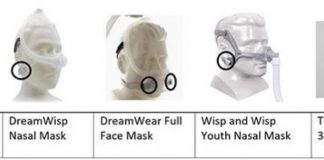March 2010 - A study in the March 1 issue of the journal Sleep shows that frequent napping is associated with an elevated prevalence of type 2 diabetes and impaired fasting glucose in an older Chinese population.
Results show that the prevalence of type 2 diabetes was 36 percent higher (adjusted odds ratio = 1.36) in participants who reported napping four to six times a week and 28 percent higher (OR = 1.28) in those who napped daily. Similar associations were found between napping and impaired fasting glucose.
The observed associations were unaltered in statistical analyses that removed participants with potential ill health and daytime sleepiness, suggesting it is less likely that diabetes leads to daytime sleepiness and raising the possibility that napping may increase the risk of diabetes.
According to the authors, napping in China is a social norm, which is practiced by all ages primarily as a habit started in childhood. In Western countries, napping is less common and is often unplanned and prompted by sleepiness likely caused by aging, deteriorating health status or nighttime complaints.
Lead author Neil Thomas, PhD, reader in epidemiology at the University of Birmingham, U.K., said that additional research is needed to determine if napping itself plays a causative role in the development of type 2 diabetes, or if other factors are involved.
Continue Reading Below ↓↓↓
"In many non-Mediterranean, Western countries a large proportion of those that nap are generally older or have other conditions that cause tiredness and create an urge to nap," said Thomas. "The napping can therefore be a marker of disease."
This cross-sectional study analyzed baseline data from the Guangzhou Biobank Cohort Study, a collaboration between the Guangzhou Number 12 People's Hospital and the Universities of Birmingham and Hong Kong. The community-based study took place in Guangzhou, China, where 19,567 participants between the ages of 50 and 93 years were recruited from 2003 to 2004 and 2005 to 2006. The sample comprised 13,972 women with a mean age of 61.4 years and 5,595 men with an average age of 64.2 years.
Participants underwent a half-day assessment, which included a structured interview on lifestyle and medical history, and a physical examination. Self-reported frequency of napping was obtained by questionnaire, and type 2 diabetes was assessed by a fasting blood glucose sample and/or self-reports of physician diagnosis or treatment. Participants were asked to describe their napping habits and daytime sleepiness.
Type 2 diabetes was identified in 13.5 percent of the sample and was more prevalent in people who reported napping daily (15.1 percent) and in those who napped four to six times per week (14.7 percent). Logistic regression models were constructed to assess the relationship between napping and diabetes and impaired fasting glucose, adjusting for demographics, lifestyle, sleep habits, health status, body fat and metabolic markers.
At least one nap per week was reported by 67.2 percent of participants, more commonly in males (76.4 percent) than in females (63.6 percent). About 59.4 percent of these people reported napping daily. Total sleep duration was longer and daytime sleepiness was reported less often in more frequent nappers than in people who never napped.
In a sub-sample of 3,822 participants who were re-contacted for additional information about sleep habits, there was a statistically significant trend of increasing risk of diabetes with longer nap duration. Compared with people who never took naps, the risk of diabetes was 41 percent higher (OR = 1.41) for people who took naps that lasted longer than 30 minutes and 35 percent higher (OR = 1.35) for people whose naps lasted 30 minutes or less.
The authors noted that the association between napping and diabetes was observed despite the fact that nappers had higher levels of physical activity, which has been shown to reduce the risk of diabetes. This suggests that the relationship between napping and diabetes might have been stronger had it not been offset by the protective effects of physical activity.
The authors added that there will be profound public health implications in China if the relationship between napping and increased risk of type 2 diabetes is confirmed in longitudinal studies, as the nation is currently affected by an emerging diabetes epidemic.
Source: American Academy of Sleep Medicine










